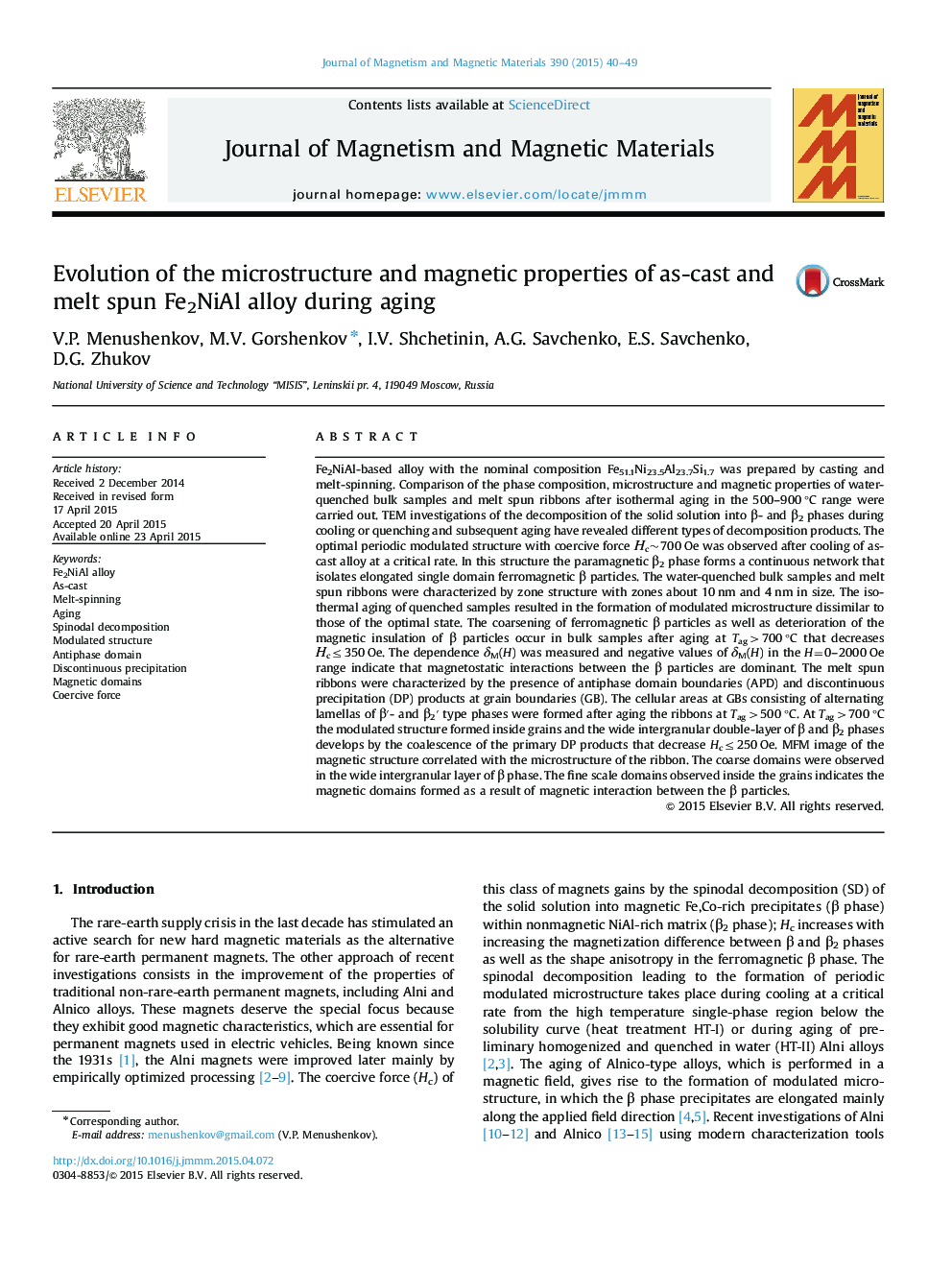| Article ID | Journal | Published Year | Pages | File Type |
|---|---|---|---|---|
| 1798800 | Journal of Magnetism and Magnetic Materials | 2015 | 10 Pages |
•Detailed studies on microstructure formation in bulk and melt spun ribbon states.•Several types of solid solution decomposition in melt spun ribbons were observed.•SD led to the formation of zone structure inside grains.•Delta M measurements showed magnetostatic interaction between the β particles•DP reaction in GBs forms the lamellar microstructure consisting of β′ and β′2 phases.
Fe2NiAl-based alloy with the nominal composition Fe51.1Ni23.5Al23.7Si1.7 was prepared by casting and melt-spinning. Comparison of the phase composition, microstructure and magnetic properties of water-quenched bulk samples and melt spun ribbons after isothermal aging in the 500–900 °C range were carried out. TEM investigations of the decomposition of the solid solution into β- and β2 phases during cooling or quenching and subsequent aging have revealed different types of decomposition products. The optimal periodic modulated structure with coercive force Нc~700 Oe was observed after cooling of as-cast alloy at a critical rate. In this structure the paramagnetic β2 phase forms a continuous network that isolates elongated single domain ferromagnetic β particles. The water-quenched bulk samples and melt spun ribbons were characterized by zone structure with zones about 10 nm and 4 nm in size. The isothermal aging of quenched samples resulted in the formation of modulated microstructure dissimilar to those of the optimal state. The coarsening of ferromagnetic β particles as well as deterioration of the magnetic insulation of β particles occur in bulk samples after aging at Tag>700 °C that decreases Нc≤350 Oe. The dependence δM(H) was measured and negative values of δM(H) in the H=0–2000 Oe range indicate that magnetostatic interactions between the β particles are dominant. The melt spun ribbons were characterized by the presence of antiphase domain boundaries (APD) and discontinuous precipitation (DP) products at grain boundaries (GB). The cellular areas at GBs consisting of alternating lamellas of β′- and β2′ type phases were formed after aging the ribbons at Tag>500 °C. At Tag>700 °C the modulated structure formed inside grains and the wide intergranular double-layer of β and β2 phases develops by the coalescence of the primary DP products that decrease Hc≤250 Oe. MFM image of the magnetic structure correlated with the microstructure of the ribbon. The coarse domains were observed in the wide intergranular layer of β phase. The fine scale domains observed inside the grains indicates the magnetic domains formed as a result of magnetic interaction between the β particles.
